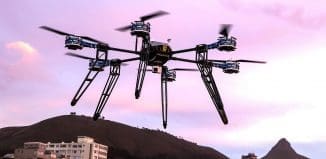Fuel Cell Technology – What Benefits for Military Vehicles?
This post is also available in:  עברית (Hebrew)
עברית (Hebrew)
Has fuel cell technology got the potential to replace gasoline-based engines to drive armoured vehicles and naval vessels?
A Fuel Cell System Manufacturing (FCSM) joint venture was announced by General Motors (GM) and Honda to mass produce hydrogen fuel cell systems for each company’s future offerings. Mass production will begin around 2020, the companies said in a statement.
A fuel cell vehicle (FCV) uses hydrogen-powered fuel cell propulsion instead of a standard internal combustion engine. FCVs offer a potentially sustainable energy source through the mixture of hydrogen and oxygen, with zero air emissions produced, according to the US Office of Navy Research (ONR) website.
GM introduced the new Chevrolet Colorado ZH2 army truck during the Association of the United States Army (AUSA) meeting in October last year. The car is the first off-road fuel-cell powered electric vehicle from the American automaker.
The ONR is looking for potential applications for other military vehicles in a variety of environments. According to defenseworld.net, GM is also applying that hydrogen fuel cell technology for US Navy unmanned undersea vehicles through a project with the ONR and is exploring a variety of aerospace applications.
US Army officials want to compare the fuel cell technology to traditional gasoline- or diesel-engine vehicles. The army hopes such fuel cell vehicles would eventually be used for quiet operation, to export power, generate high wheel torque for off-road driving, be refueled in less than five minutes, and provide especially low fuel consumption at idle.
Fuel cells extend the operating range and mission of military systems by reducing the dependence on carbon-based fuel sources. They also save energy and reduce the operating costs associated with dependence on foreign oil, the website states.
The ONR under the Fuel cells program is exploring improved power generation capabilities within the critical weight and volume constraints of future systems that are designed for increased capability and agility, including all electric naval ships, unmanned (air, surface, subsurface, ground) vehicles, aircraft auxiliary power units and man-portable power applications. The systems developed in the program will also provide enhanced mission endurance, as well as reduced logistics support requirements through more efficient fuel utilization.
GM and Honda said in addition to advancing the performance of the fuel cell system, the companies were working together to reduce the cost of development and manufacturing through economies of scale and common sourcing.




























